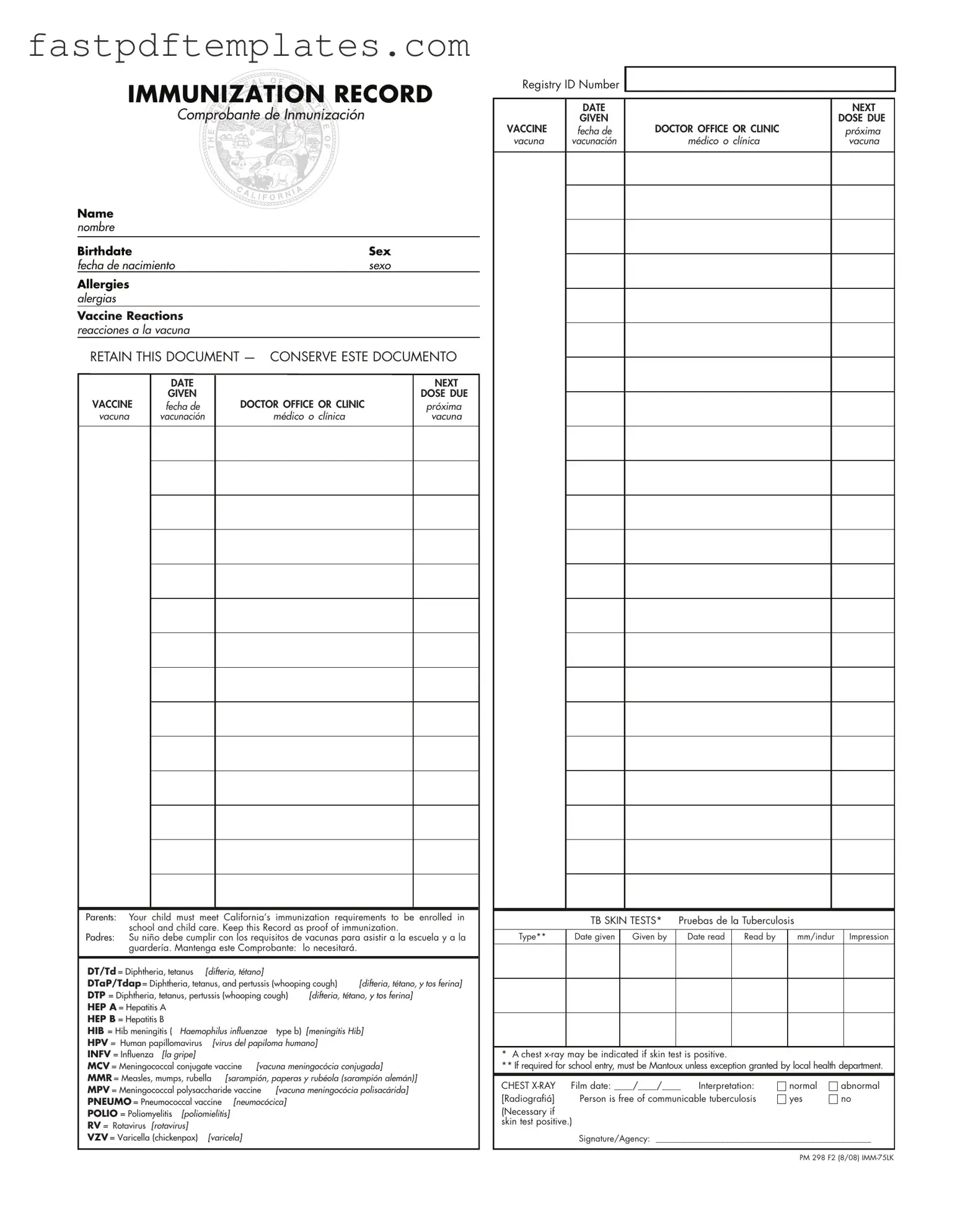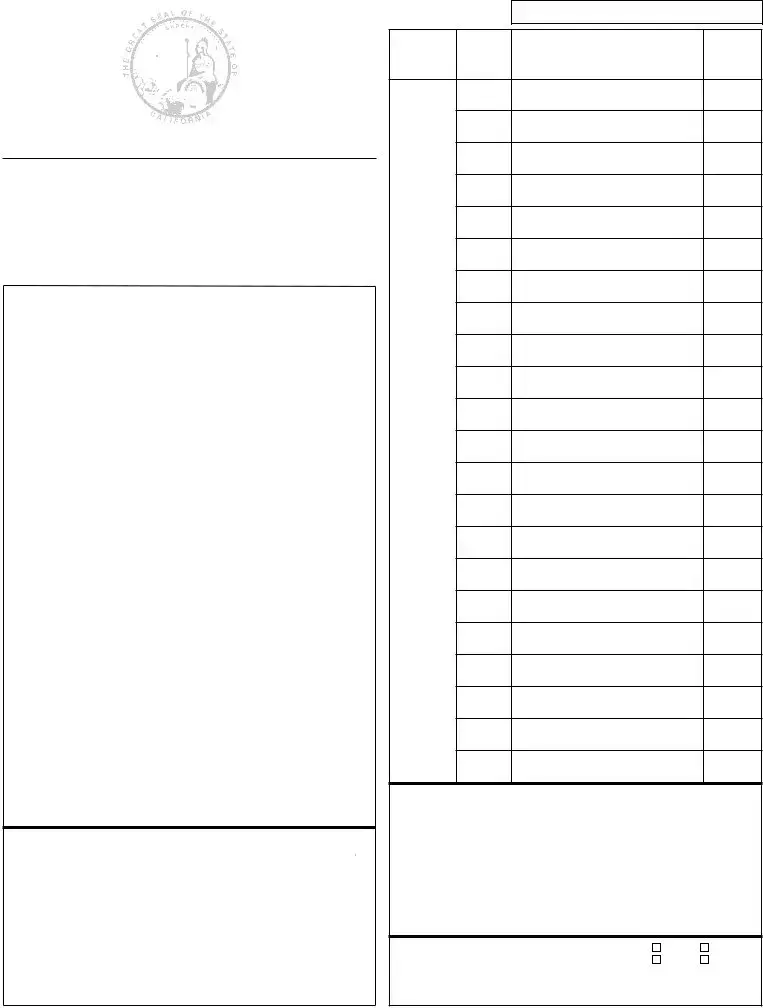The Immunization Record form shares similarities with the Health Insurance Portability and Accountability Act (HIPAA) Privacy Notice. Both documents emphasize the importance of maintaining individual health information securely. The Immunization Record requires parents to keep it safe as proof of vaccinations, while the HIPAA Privacy Notice informs individuals about their rights concerning personal health information. Both documents aim to protect sensitive information and ensure that individuals are aware of how their health data is used and stored.
Another document that resembles the Immunization Record is the School Health Record. This record is often maintained by schools to track students' health information, including immunizations, allergies, and medical conditions. Just like the Immunization Record, the School Health Record serves as a critical tool for ensuring students meet health requirements for school attendance. Both documents require accurate and up-to-date information to safeguard the well-being of children in educational settings.
The Certificate of Immunization is another similar document. This certificate is often required for school enrollment and serves as official proof that a child has received the necessary vaccinations. Much like the Immunization Record, the Certificate of Immunization includes details about the vaccines administered, dates, and the healthcare provider's information. Both documents are essential for compliance with state health regulations and help prevent the spread of vaccine-preventable diseases.
Additionally, the Vaccine Information Statement (VIS) shares similarities with the Immunization Record. The VIS provides essential information about vaccines, including benefits, risks, and potential side effects. While the Immunization Record documents the vaccines a child has received, the VIS educates parents and guardians about those vaccines. Both documents play a vital role in promoting informed decision-making regarding vaccinations.
The Medical History Form is another document that resembles the Immunization Record. This form collects comprehensive information about a patient’s past medical history, including immunizations, allergies, and previous illnesses. Similar to the Immunization Record, the Medical History Form is crucial for healthcare providers to understand a patient’s health background and make informed decisions about future care. Both documents emphasize the importance of accurate health information in providing effective medical treatment.
Lastly, the Child Health Passport is akin to the Immunization Record. This document tracks a child's health milestones, including immunizations, growth measurements, and developmental screenings. Like the Immunization Record, the Child Health Passport serves as a comprehensive overview of a child's health status, making it easier for parents and healthcare providers to monitor health progress. Both documents are instrumental in ensuring children receive the necessary care and vaccinations throughout their early years.

